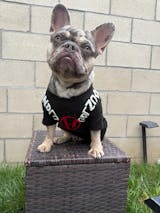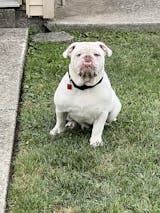Excessive Tear Stains (Epiphora) in Dogs
Ever noticed your furry friend's eyes watering more than usual? Excessive tearing, known as epiphora in the pup world, is more than just a minor inconvenience—it can signal underlying health issues or breed predispositions. In this article, we'll look into the causes, signs, and solutions for those damp, tear-stained fur patches beneath your dog's eyes. From the breeds most susceptible to experiencing this to handy tips and products to keep those tears at bay, let's get to the bottom of epiphora in our adored doggos.

Causes of Excessive Tearing in Dogs:
Medically known as epiphora in dogs, excessive tearing can arise due to various underlying reasons. One common cause is the blockage or narrowing of tear drainage passages, leading to an overflow of tears. Additionally, eye infections caused by bacteria, viruses, or fungi can trigger increased tear production as the body's natural defense mechanism. Whether environmental or related to food, allergies often provoke irritation in the eyes which can also result in excessive tearing. Physical factors such as eye injuries, foreign objects lodged in the eye, or abnormalities like ingrown eyelashes can also contribute to this watery mishap. Certain breeds with anatomical features such as shallow eye sockets or shorter snouts are predisposed to epiphora due to their narrowed tear ducts.
Breed Disposition:
Breed disposition plays a significant role in the likelihood of excessive tearing in dogs. Certain breeds are more prone to epiphora due to their distinctive facial features and genetic predispositions. Breeds with prominent eyes or short muzzles such as Bulldogs, Pugs, Shih Tzus, and Maltese, often have narrower tear ducts, leading to poor drainage and subsequent tear overflow. The adorable appearance of these squishy-faced breeds may come at the cost of increased dampness beneath their eyes. While these breeds steal our hearts with their unique looks, it's essential for pet owners to be aware of their susceptibility to excessive tearing and take proactive measures to maintain their health. Regular care and attention can go a long way in ensuring these charming pups remain comfortable and tear-stain free.
Signs of Epiphora in Dogs:
- Dampness or wetness beneath the eyes
- Reddish-brown staining around the fur
- Unpleasant odor near the eyes
- Skin irritation or inflammation
- Potential skin infections due to constant moisture

What Can I Do for the Staining?
When it comes to managing those pesky tear stains, a good hygiene routine is key. A helpful solution in the fight against tear staining is Squishface Wrinkle Wipes. These wipes are handy, and help clean the area of dirt and debris that often tends to sit on the fur and worsen your dog’s tear stains. As an extra added bonus, consider adding Squishface Wrinkle Paste into your dog’s daily grooming routine. Both pastes help form a water-repellent barrier to help keep bacteria, yeast, and fungus at bay. Plus - they contain limited yet calming ingredients to help soothe your pup’s skin.
The Bottom Line:
In the realm of dog care, understanding and addressing excessive tearing is a crucial part of responsible pet ownership. By recognizing the causes and breed predispositions behind those teary eyes, we empower ourselves to provide better care for our beloved furry buddies. With a little bit of help thanks to Squishface products, there are solutions to help manage tear stains and promote better eye health. So, as we revel in the joy our pups bring, let's ensure their comfort and well-being by staying informed and embracing these simple yet effective dog care practices. After all, a little care goes a long way in keeping those wagging tails and bright eyes full of life and happiness.
Be sure to follow us on TikTok, Instagram, Facebook, Pinterest, YouTube, and visit our blog weekly for more tips on caring for your beloved furry buddy, and the latest on all things Squishface!










